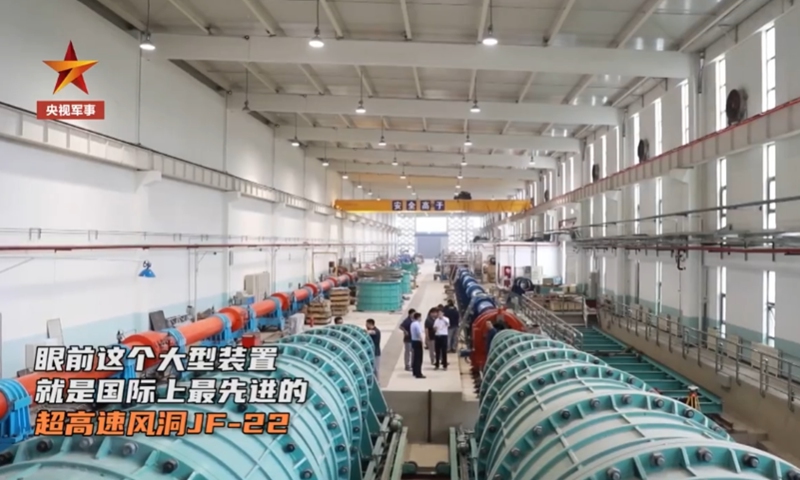China is developing a hypersonic airliner capable of transporting 10 passengers to anywhere in the world in less than an hour.
The 148-foot-long (45-meter) plane is about a third the size of a Boeing 737 and has delta wings identical to that of Concorde, the world’s first supersonic airliner, but with the tips pointed skyward, reported the Daily Mail.
Officials hope to build a fleet of the jets by the end of 2035 and to increase their capacity to 100 people by 2045 – although their exact purpose is yet to be revealed. Owing to its intricate construction, the plane will be able to travel at a speed of Mach 5 or more than five times the speed of sound.
A study by Chinese space scientists participating in the country’s Mars and moon missions unveiled a prototype of the plane. Its design was inspired by the Boeing Manta X-47C, a NASA project that was shelved in 2000 due to its high cost.

The EurAsian Times had previously reported that a new wind tunnel is being developed by the Aerodynamics Research Institute of the state-owned Aviation Industry Corporation of China (AVIC).
The wind tunnel, known as FL-64, has passed airflow distribution calibration tests at high Mach numbers and can simulate the severe speeds and temperatures encountered by hypersonic weapons.
The wind tunnel can run for more than 30 seconds, allowing it to test an aircraft’s hypersonic capabilities, such as weapon separation and deployment.
FL-64 is designed to address crucial aerodynamic issues faced by various aircraft, and it will serve as another important tool in the development of hypersonic weapons and equipment, as well as providing a foothold to support China’s aerospace aspirations.
China has been in the news for its rapid strides in hypersonic technology. In July this year, it had tested a hypersonic glide weapon system that reportedly traveled around the Earth in what was an extraordinary feat achieved by the Chinese.
However, a few weeks earlier another stunning news emerged that a second missile was fired from this hypersonic glide vehicle into the South China Sea. Neither the United States nor Russia has ever achieved such a feat. It was believed then that China’s hypersonic capability might far exceed that of the US and Russia.
China Adopts Project Junked By NASA?
Based on a bold design by a NASA scientist more than two decades ago, a Chinese research team reportedly built and tested a prototype hypersonic flying engine.
The Two-Stage Vehicle (TSV) X-plane designed by Ming Han Tang – the then head engineer of NASA’s hypersonic program in the late 1990s – was powered by two separate engines on the sides, unlike most hypersonic aircraft with an engine in the belly.
At lower speeds, the engines might operate as regular turbine jet engines and transition to a high-speed mode with no moving components when the aircraft accelerates to five times the speed of sound or higher.
The US government canceled testing Ming’s design of the Boeing Manta X-47C, the original hypersonic plane program, in the early 2000s due to technical challenges and cost.

But Professor Tan Huijun and his colleagues at Nanjing University of Aeronautics and Astronautics in China have built a prototype machine with a pair of side-opening air inlets based on a declassified blueprint of Ming’s concept.
Tan, who has received the Chinese government’s awards for his contributions to the country’s hypersonic weapons program, put the prototype through its paces in a wind tunnel that could simulate flight conditions from Mach 4 to Mach 8 for many seconds.
Tan and his team found that the engines could start even in the most difficult of flight conditions, just as Ming had predicted back at NASA, as previously reported by SCMP.
China’s Hypersonic Plane
China has issued statements that could be seen as a sharp rebuttal to the Americans and a strong message to its western rival about its homegrown hypersonic capabilities.
“The US government had largely ignored Ming’s idea, but in China, the design was gaining traction because “understanding its work mechanism can provide important guidance to hypersonic plane and engine development,” Tan and colleagues said in a paper published in the Chinese peer-reviewed, Journal of Propulsion Technology.
While the prototype is unlikely to go into production soon, the team claims that “knowing its work mechanism can provide vital direction to hypersonic plane and engine development”.
Engineers tested how well the plane would operate at high altitudes using a new aerodynamic model that has been proven beneficial in China’s recent space missions. Because of the high-speed heat and pressure, they also discovered portions of the plane that needed to be strengthened.
China’s hypersonic weapons program started soon after Ming quit NASA, according to some Chinese scientists. This was also a time when many Chinese-origin scientists and physicists were purged from important American organizations owing to major mistrust of ethnic Chinese in the United States.
According to Tan and his colleagues, Ming’s design was not ideal. Strong turbulence could occur around several corners of the air inlet, compromising flying stability, according to computer simulation and experimental results.
In the earliest stages of flight, China’s hypersonic weapons generally utilize a rocket. The rocket shuts down after reaching a high altitude and high speed, allowing the air-breathing engine to take over.

However, Yin Zeyong, Director of science and technology at the Aero Engine Corporation of China in Beijing, said China was also in the process of fast-developing and testing turbojet engines capable of flying at Mach 3-4 to complement or replace the rocket in hypersonic flight.
Turbine-based mixed cycle engines may be a more feasible and ideal alternative, according to a paper published in the journal Aeroengine earlier this year. By 2035, Chinese space officials hope to have a jet that can transport 10 passengers anywhere on the earth in an hour.
- Contact the author at sakshi.tiwari9555@gmail.com
- Follow EurAsian Times on Google News




